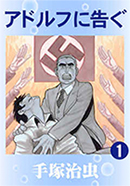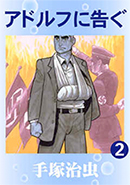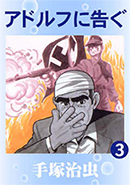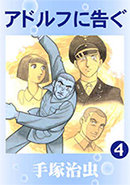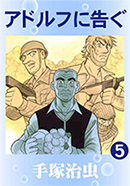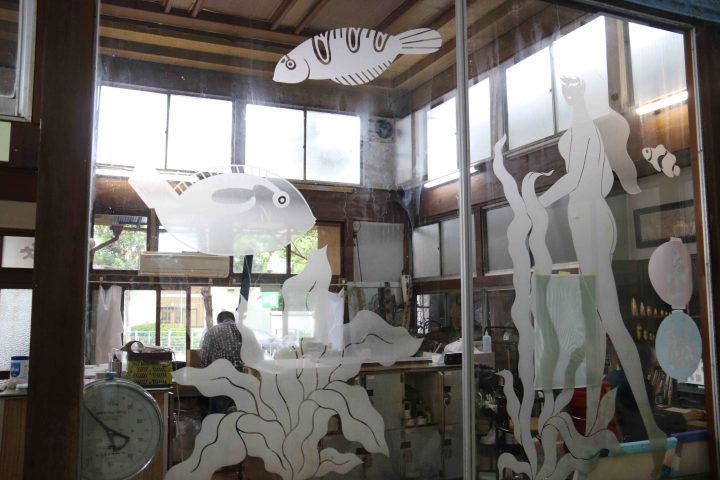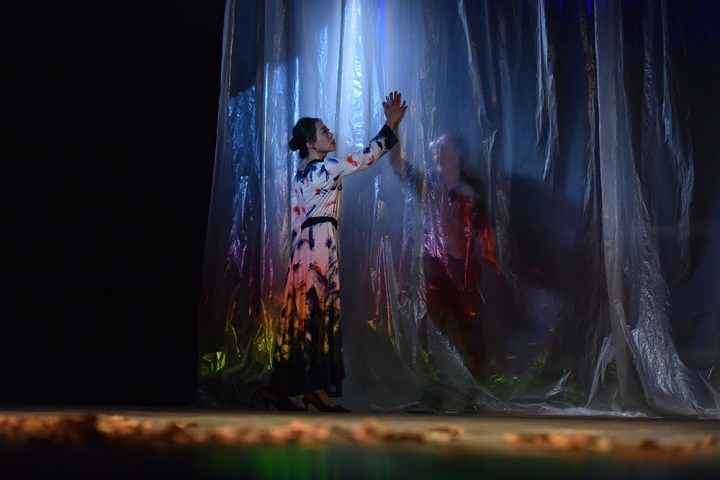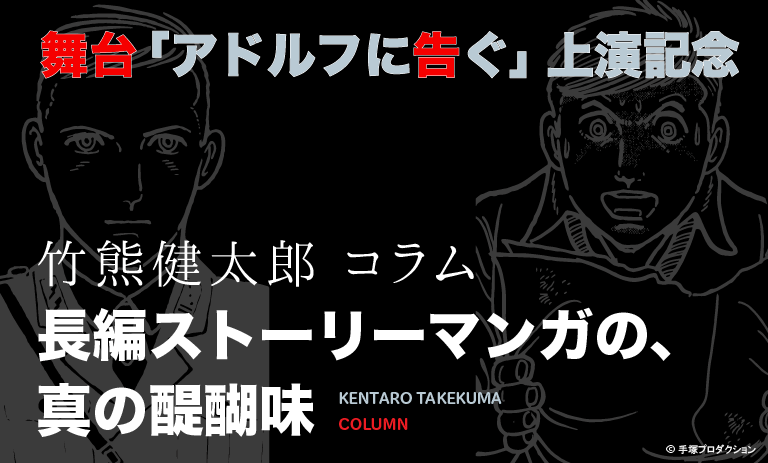
The true joy of long story manga
Kentaro Takekuma
I reread Tezuka Osamu's "Adolf, Sayonara" for the first time in almost 30 years. This work, which was serialized in the magazine "Weekly Bunshun" from 1983 to 1985, was the first story manga to be serialized in a general magazine for adults, rather than a boys' magazine or a manga magazine. Of course there were precedents, but as far as I can remember, "Adolf, Sayonara" was the first manga to be serialized for a long time in a magazine for office workers in their 30s and 40s, not a manga magazine, with a full-fledged story manga, not a short one, bound in a hardcover that at first glance seems unmanga-like, and lined up in the general literature section outside the manga section.
Reading it for the first time in a long time, I was impressed by how "easy to read" it was. The story flowed smoothly into my head without any hitches. There were never any close-ups of the main characters showing off, or endless pages of suspenseful fights where you wonder who will win. In adventure manga for boys, these scenes are usually considered the "highlights" and are usually devoted to many pages, but from the standpoint of "telling a story," such scenes could be said to be unnecessary. I was reminded that Tezuka's manga is not character manga whose purpose is to show off the characters, but rather "story manga" after all.
Set in Japan (Kobe) and Germany in the 1930s, "Adolf" tells the story of three Adolfs: two Germans born and raised in Japan, Adolf Kaufmann and Adolf Kamil, and Adolf Hitler, who came to power and became a dictator in Germany. The story begins with the famous opening ceremony of the 1936 Berlin Olympics, hosted by Hitler's Nazis, and features newspaper reporter Toge Sohei as the narrator.
Just before that, in the first three pages, there is a prologue in which an elderly Toge Sohei visits "someone's" grave in postwar Israel, but the reader is not yet informed of Toge or whose grave he is visiting. The author simply narrates, "This is the story of three men called Adolf."
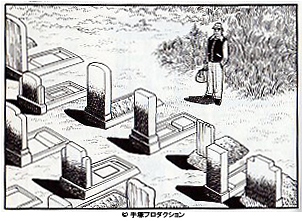
Just by reading this opening, you can tell that the author has solidified his story concept all the way to the end before he begins writing. In manga that are intended to be serialized for a long time, it is common for the author to "start writing without deciding how the ending will end." Why is this possible? Although it may have the appearance of a story manga, at heart it is a manga that showcases the characters. A character manga is maintained by first choosing an appealing character, then having him face various difficulties and fight many strong opponents. In this case, the story and overall concept become secondary. Otherwise, it would be impossible to maintain the long-running serialization that continues for 30, 40, and sometimes even 50 volumes or more, which is the mainstream in commercial manga today.
Tezuka Osamu is said to be the "father of long story manga." The definition of a long story changes over time, but I think that generally a work over 100 pages can be called a long story, and anything less than that can be called a short story. Works between 50 and 100 pages can also be called medium-length stories. However, now that serialization has continued for over 10 years and it is common for works to have over 30 volumes, a work like "The Jungle Emperor," which is only three volumes long, may be considered a short story.
There are very few long works by Tezuka Osamu that are more than five volumes long in book form. "Buddha" is 14 volumes long, and "The Tree of Hidamari" is 11 volumes long, both of which are exceptionally long for Tezuka. "Black Jack" is more than 20 volumes long, but since each story is serialized in a self-contained format with a single protagonist, it can be seen as a series of short stories.
"To Adolf," a continuous story spanning five volumes, is considered a long novel by Tezuka.
"To Adolf" is a drama with an incredibly complicated web of human relationships. The skill with which it has been made into an easy-to-read manga is almost miraculous. There are three main characters alone, and four if you include Toge Sohei, who plays the narrator throughout most of the story. The theme of "racial issues" is intertwined here, and the fates of the main characters are tossed about in Japan and Germany as the whereabouts of a top-secret document which claims that "Hitler's family has Jewish blood" turn into a trajectory.
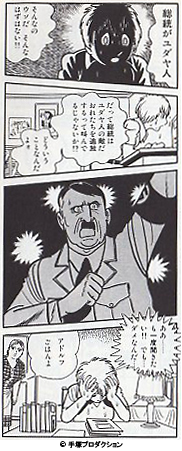
Adolf Kaufmann and Adolf Kamil were childhood friends born in Kobe and were best friends from the beginning, but Kaufmann was half German, born to a German diplomat and his Japanese wife, and Kamil was German-Jewish. There was no discrimination against Jews in Japan, so the two got along without any questions when they were young, but when Hitler came to power in Germany and began to implement blatant anti-Jewish policies, their relationship was torn apart as they grew up. Kaufmann was persuaded by his father to enter a training school for Nazi officials in Germany, where he was thoroughly indoctrinated with Nazism. Meanwhile, Kamil's father went to his homeland to save his fellow countrymen (the Jews) and was put into a concentration camp, where he was shot dead by Adolf Kaufmann, who became a Nazi.
The story is set in Japan, Germany, and Israel, and covers pre-war, wartime, and post-war history. Countless people are at the mercy of history. It is a manga with a truly grand concept and a strong backbone, worthy of being placed in the literature section.
When talking about stories in manga, "Adolf" is perhaps the perfect text. The 1980s, when this work was written, was a transitional period when manga was moving from an era in which the reader was drawn to the story, to an era in which the characters were used to show (attract) the viewer. I sometimes think that story manga, which draws the reader in with the development of the story, may have died with Tezuka Osamu in 1989. "Adolf" is a perfect example of this, but I think the "readability" of Tezuka's manga comes from the fact that all the elements that make up manga - pictures, characters, dialogue, and panel layouts - are directly connected to the "story." Tezuka's manga begins with a story, and all the elements serve to express and support that story. In that sense, there is nothing wasted.
Reading "Adolf, My Love," for the first time in 30 years, taught me the true joy of story-telling manga.
<Profile of Kentaro Takekuma>
Born in Tokyo in 1960. Editor and part-time lecturer at Tama Art University. Has been working as a freelance editor and writer since 1981. Mainly works in the subculture field, focusing on manga and animation.
Tell Adolf, all 5 volumes (Complete Works of Tezuka Osamu Bunko)
"Dennou Mavo" is an online magazine edited by Kentaro Takekuma.
The play "To Adolf," directed by Tamiya Kuriyama, will begin performances at KAAT Kanagawa Arts Theatre from Wednesday, June 3, 2015!
http://www.kaat.jp/d/kaat_adolf
